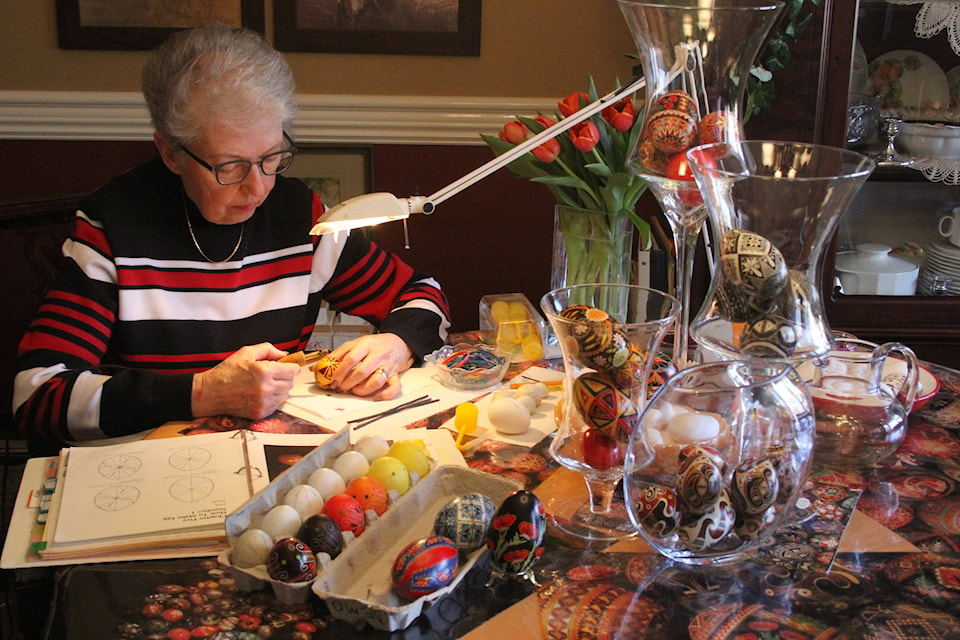You don’t have to be Ukrainian to create beautiful Easter eggs.
All you need is an appreciation of the cultural artistry of the East European country, as well as a steady hand, creative eye for detail and composition. And patience.
Loads and loads of patience.
Jo Maetche possesses the above qualities in spades. She doesn’t come from a Ukrainian heritage, yet she’s created dozens of gorgeous Easter eggs at her home. Decorated with geometric shapes, wheat sheaves, poppies or her own doodled designs, each are tiny, intricate works of art.
The Red Deer resident has been producing elaborate eggs since buying a book on the process from a local craft store in 1990. “I would always see them and think they were so pretty….”
Since Maetche had been doodling since her childhood in Didsbury, “and I had a degree of patience,” she thought she’d try her hand at her first decorated egg by studying the book’s pictures and the explained process.
As with any skill, practise makes perfect: Maetche has honed her virtuosity over the years by decorating at least a few more eggs in the lead-up to each Easter season, often getting together with friends or relatives who stop by for a chat and a lesson.
It takes her 20-25 hours to complete some of her more intricate designs. But the decorating all starts the same way: Maetche divides a raw egg into different sections with a pencil, then draws on lines with a hot-wax tool called a kistka.
Depending on the complexity of her designs, the goose, chicken, duck or quail eggs she’s decorating are dipped into up to half-a-dozen or more (non-edible) dyes. Each time she wants to preserve a certain area of colour, it must be covered with wax before the egg is dipped into the next darker shade.
Completed eggs are ultimately varnished, and their contents removed with the help of a small, finger-operated air pump, through a small drilled hole in the shell.
Maetche said various egg designs originated in different parts of Ukraine. Some are full of triangles, diamonds and crosshatching, others are more organic, with flower, leaf and chestnut motifs. Still others are emblazoned with loose abstract shapes in brown and black colours, resembling First Nations art.
Maetche, who sometimes tries her own interpretations (such as one egg dyed to look like a hot-air balloon), noted that decorating ideas can be as limitless as one’s imagination.
In Ukraine, Easter eggs are given to friends and family members on Easter morning.
Maetche, a retired physiotherapist, came close to stumbling upon a less desirable family tradition when seven of her painstakingly decorated eggs were eaten by the family dog.
Apparently, they weren’t too appetizing, however, because Maggi the standard poodle never tried that again.
